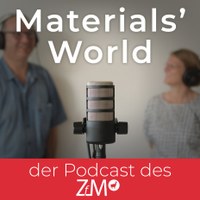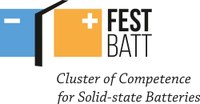The Center for Materials Research
- Welcome to the web sites of the Center for Materials Research
-
Welcome to the web sites of the Center for Materials Research!
The Center for Materials Research is an interdisciplinary university research center at JLU.
It is dedicated to the implementation of joint research projects, the support of the study courses in materials science and it promotes scientific qualification in materials research.
An overview of our scientific team is available under
Team & Topics.
The center provides the participating research groups with central experimental resources in its
Method Platforms.
The ZfM coordinates the JLU research profile area ("area of potential")
Material and Energy (focus: storage materials).
Further information on our tasks can be found under
About us.
- July
-
Picture of the Month - Juli 2024
Hydrogenation of Mixed Ir-Ti Oxide: A Powerful Concept to Promote the Oxygen Evolution Reaction in Acidic Water Electrolysis

[1] W. Wang, P. Timmer, A. Spriewald Luciano, Y. Wang, T. Weber, L. Glatthaar, Y. Guo, B.M. Smarsly, H. Over, Catalysis Science & Technology, 2023, 13, 1395–1408, DOI: 10.1039/D2CY02000A.
[2] W. Wang, M. Zlatar, Y. Wang, P. Timmer, A. Spriewald- Luciano, L. Glatthaar, S. Cherevko, H. Over, submitted (July 2024)
This picture was submitted by Prof. Dr. Herbert Over.
Further insights into the research activities of the ZfM groups can be found in the Gallery.
- Portlet links engl.
-
Management of the Center
Office
Center for Materials Research
Heinrich-Buff-Ring 16
D-35392 Gießen
GermanyDr. Thomas Leichtweiß
Phone: +49(0)641-99 33601Dr. Martin Güngerich
Phone: +49(0)641-99 33602
Study Programs in Materials' Science
- News (in German)
- Events (in German)






